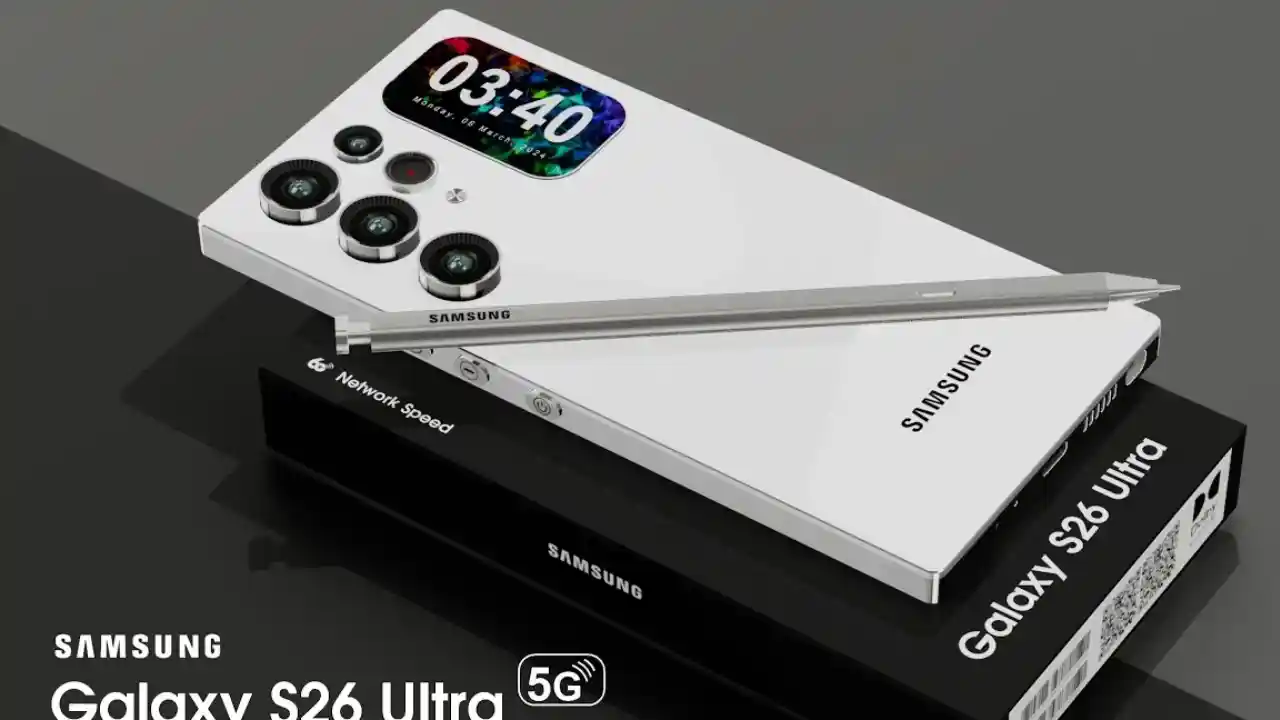Samsung is preparing a bold twist for its upcoming flagship, the Galaxy S26 5G. While users were expecting either a Qualcomm Snapdragon or Samsung’s in-house Exynos chip, new developments reveal that Samsung may combine the best of both worlds. The Galaxy S26 is likely to ship with a Snapdragon chip that’s manufactured by Samsung itself. This new approach could bring better performance control, reduced costs, and a major shift in how Samsung handles its premium smartphones.
What Makes the Galaxy S26 Chipset Unique
The Galaxy S26 5G is expected to be powered by a custom Snapdragon 8 series processor. But instead of being made by the traditional chip manufacturing company, Samsung might produce the chip using its own foundry. The model number being discussed is SM8850s, which suggests a Snapdragon 8 Elite Gen 2 variant built by Samsung.
This move is significant. By producing the chip in-house, Samsung could reduce its dependency on third-party manufacturers and have better control over chip performance, thermal efficiency, and cost. For users, this may translate to a more optimized phone with potentially better battery life and heat management.
Goodbye Exynos, But Not Entirely
Samsung has faced criticism in the past for using its own Exynos chips in some markets, while providing Snapdragon variants in others. Users often noticed a difference in performance and battery efficiency between the two versions. With the Galaxy S26 5G, the company seems to be avoiding this problem by sticking to Snapdragon architecture but with a manufacturing twist.
At the same time, Samsung is also reportedly working on a new Exynos 2600 chip, which may be introduced in other models or specific markets. The idea seems to be to separate its flagship Galaxy S series from past Exynos criticism while continuing to develop Exynos for future use.
Expected Performance and Features
The custom-built Snapdragon chip in the Galaxy S26 5G is expected to offer top-tier performance. Early leaks suggest clock speeds reaching up to 4.74 GHz, which is on par with high-end flagship processors. Coupled with Samsung’s optimization and hardware control, users can expect:
-
Faster app launches
-
Smoother gaming experience
-
Efficient multitasking
-
Enhanced AI and camera capabilities
This chipset will likely be paired with 12 GB or more of LPDDR5X RAM and fast UFS 4.0 storage, giving users a seamless performance experience across tasks.
Possible Design and Battery Enhancements
Apart from the processor, the Galaxy S26 5G may come with a slimmer design, likely under 8 mm thickness. The display is expected to be larger than the previous generation, possibly close to 6.9 inches with a QHD Plus AMOLED panel and 120Hz refresh rate.
Battery improvements are also on the horizon. A 5000mAh battery with up to 60W fast charging could make the Galaxy S26 one of the fastest-charging flagship phones yet. Samsung might also introduce new battery health features to help maintain long-term performance.
Launch Timeline and Model Variants
Samsung typically launches its Galaxy S series in the first quarter of the year, and the Galaxy S26 lineup is expected to follow the same pattern. The launch may take place around January or February 2026. The series could include three models:
-
Galaxy S26
-
Galaxy S26 Plus
-
Galaxy S26 Ultra
While the standard and Plus models may feature the Samsung-manufactured Snapdragon chip, the Ultra variant is rumored to use the original Snapdragon chip from its traditional manufacturer for consistent global performance.
What This Means for Samsung’s Future
By taking control of chip production, Samsung is not only trying to cut costs but also aiming to deliver a more unified and powerful smartphone experience. This strategy could allow the company to better compete with rivals who already focus on integrated hardware-software design.
It also sets the stage for Samsung to eventually become more self-reliant in the high-performance mobile chip market, which could lead to innovation and competitive pricing in the long run.
